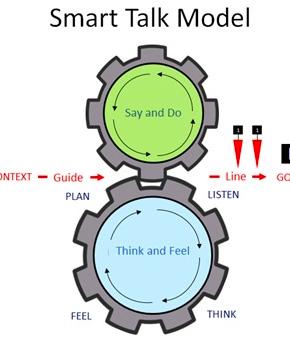
4 minute read
From the communication desk: How to use communication in mediation
By Sheila Murithi
The workplace is a dynamic environment and conflict is inevitable. As managers, supervisors, or peers we often find ourselves in situations where we act as the “referees” trying to calm a storm or at times just a breeze.
Advertisement
In the workplace, all staff must pull in one direction for the institution to work like a well-oiled machine. Unfortunately, just like machines, the engineer has to resolve rusty problems and loose nuts so that the machine can keep moving and functioning as it should.
Using the right communication tools can help the two parties resolve much quicker and with less damage to their relationship.
First, we must understand the different communication styles used in interpersonal relationships. Nicoleta-Elena Buzatu and MariaDaniela Pipaş in their 2014 research on Effective Communication – A Viable Solution to Mediation explain the different communication styles and how they are exhibited during conflict:
Passive communication style: These individuals avoid expressing opinions or feelings to protect the needs and rights they have. This style of communication is usually used by people with low self-esteem and may be characterized by the following behaviors: lack of action, fear of offenses brought against them by others, refusal of expressing their anger and aggression, the desire to be perceived by other people charismatic, pleasant and extroverted.
PHOTO | STOCK
A mediator soling dispute between two parties
Their passivity in communication causes them to feel more acutely frustrated, feelings of stress and tension, ultimately reaching the point in which they isolate physically and emotionally. Aggressive communication style: The individuals express their feelings and opinions strongly advocating for the needs they have in a way that violates the rights of those with whom they come in contact.
These communicators are aggressive verbally and/or physically, being in a permanent state of alert, perseverance, and desire to achieve their goals by any means often resorting to forcing things, not being interested in whether their actions affect others.
Typically these individuals have unhealed emotional wounds and feelings of helplessness. They act with anger, having a dominant behavioral style that produces stress for all those involved in direct interactions with them, which will lead in time to breaking the relationships they have. Assertive communication style: is a combination of passive and aggressive style, being a style in which individuals express their opinions and feelings clearly, strongly advocating for their rights and needs without violating the rights of others.
Assertive communication is characterized by high self-esteem, honesty, and power. Assertive people are extroverted, relaxed, and talk openly about their feelings and needs, they know how to listen and accept the views of those with whom they come in contact. In this way they provide a good long-term relationship without resorting to aggression, being able to adapt effectively to conflict situations.
The mediator must then be very observant and note the behavior displayed by the disputants and listen keenly to what is being said.
This will help them gain background history and inside knowledge about the conflict. This is necessary to aid in achieving a resolution. The discovery requires good communication skills.
Randy Marcoz, an intelligence officer, investigator, trainer, counselor, and now mediator developed the Smart Talk Model as explained below:
What we say and do represents the communication skills we know and apply to our communication. These include such things as asking good questions, encouraging creative brainstorming, and empathically reframing others’ statements.
Such skills are important in moving the mediation process along the guideline. The guideline to interim objectives and ultimately our goal of a durable agreement.
The think and feel part of the model breaks down the mental processes we use into four simple steps. These steps help us integrate best practices into our communication with others. These four steps are listening, thinking, feeling, and planning. They are vital to ensuring what we say and do is informed by accurate understanding. We are trying to understand what the other parties are saying and doing.
LISTEN - What did the person say verbally and non-verbally? (Focused listening.) THINK - What could this information mean? (Development of multiple









